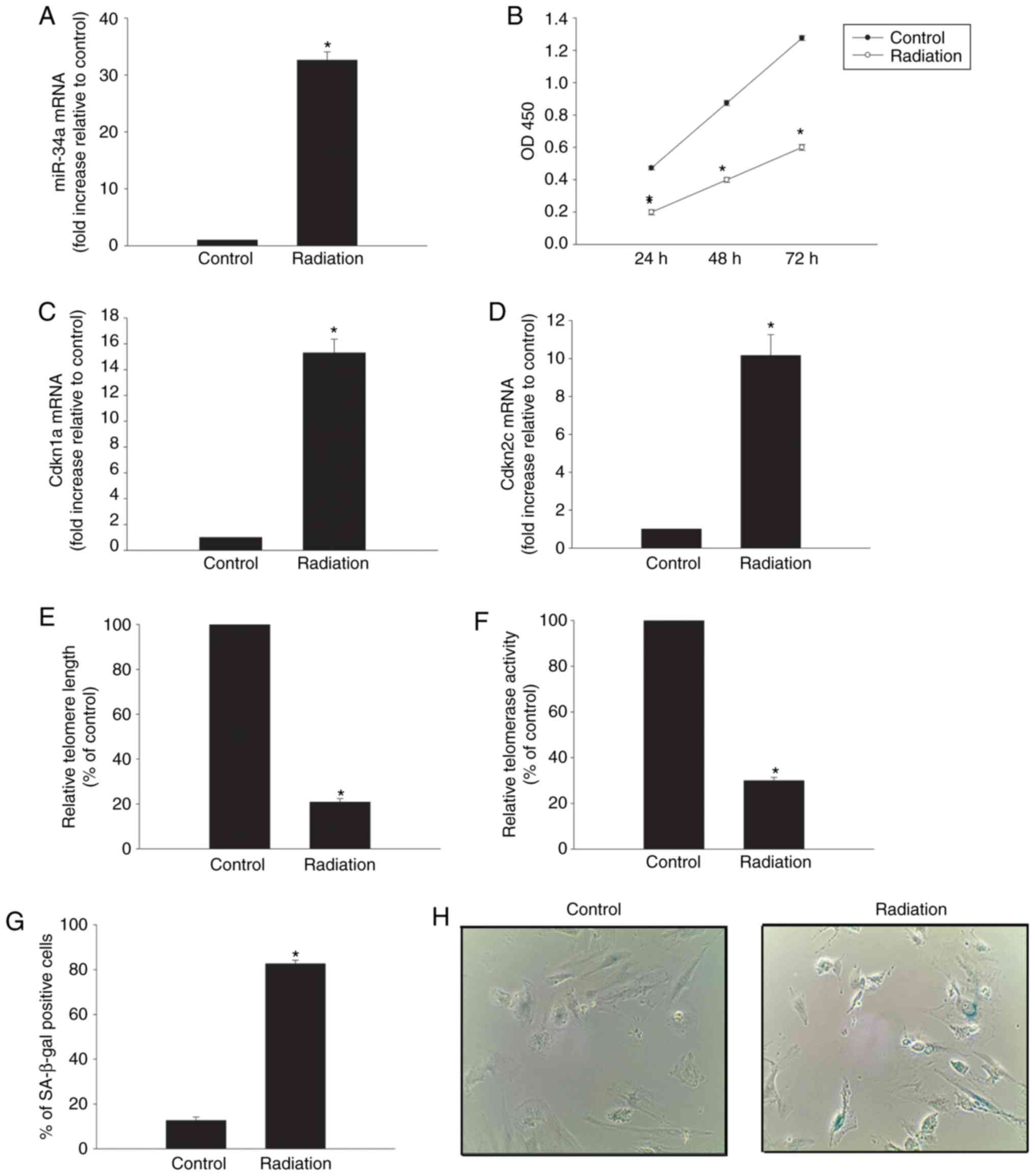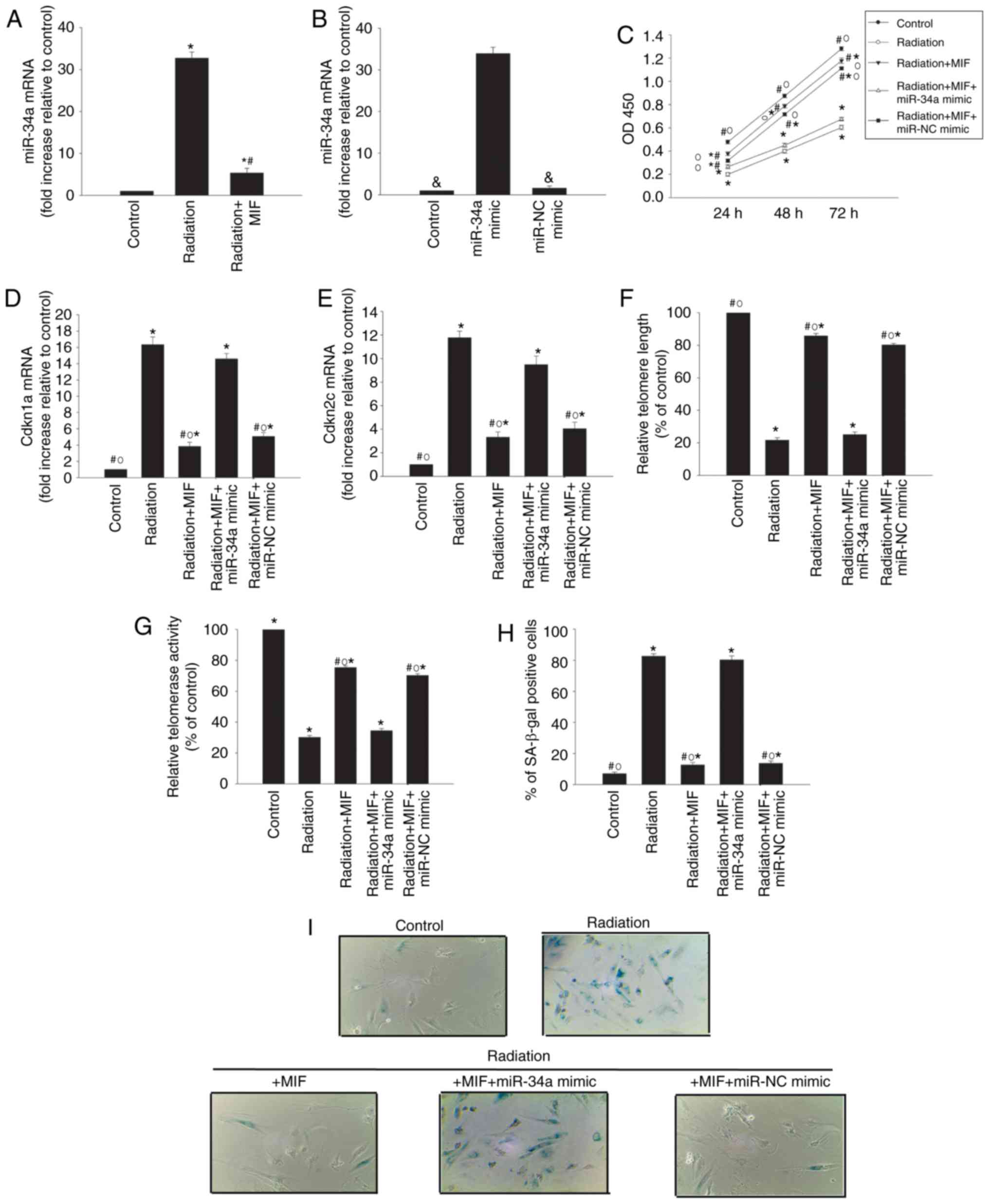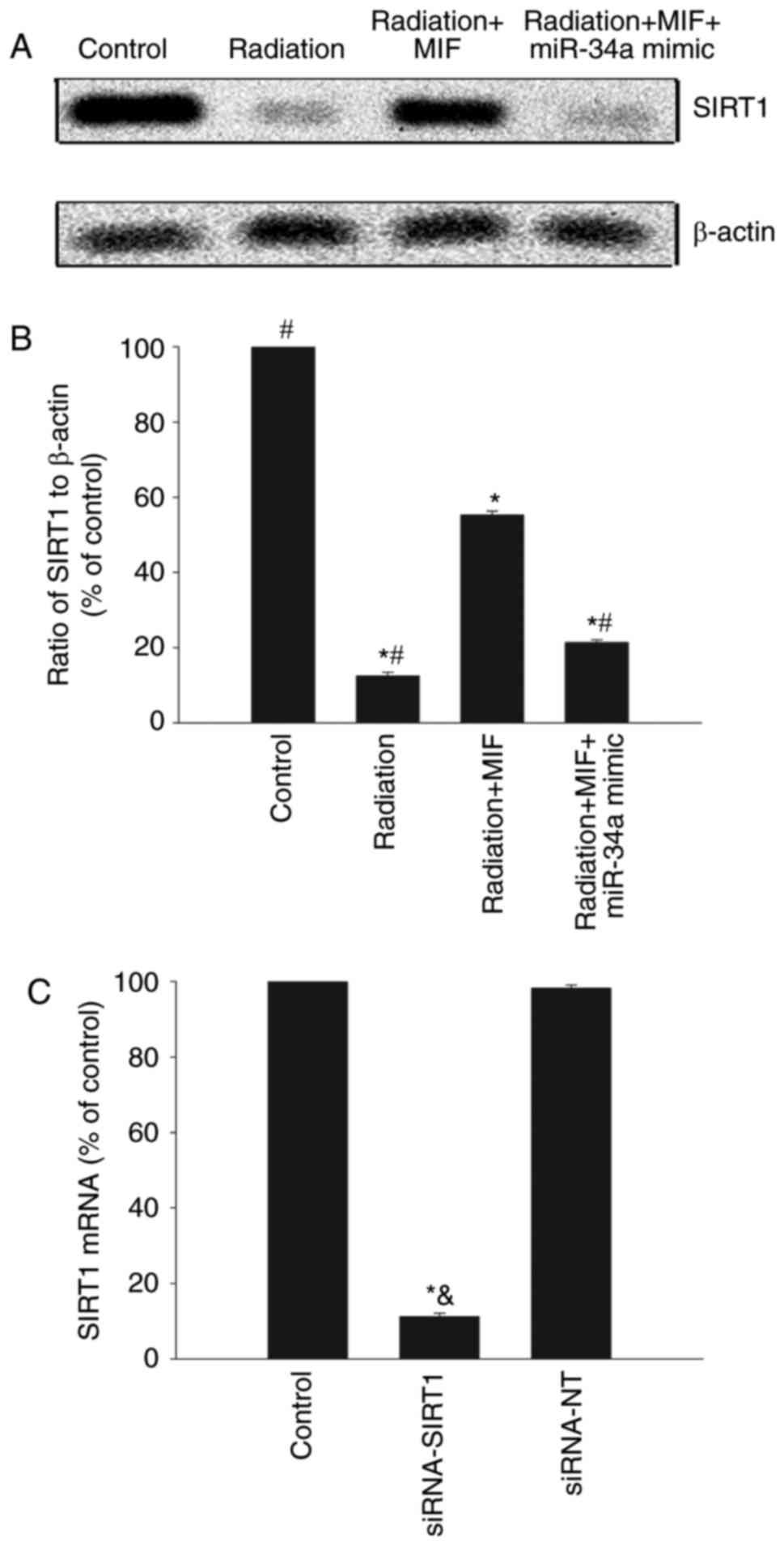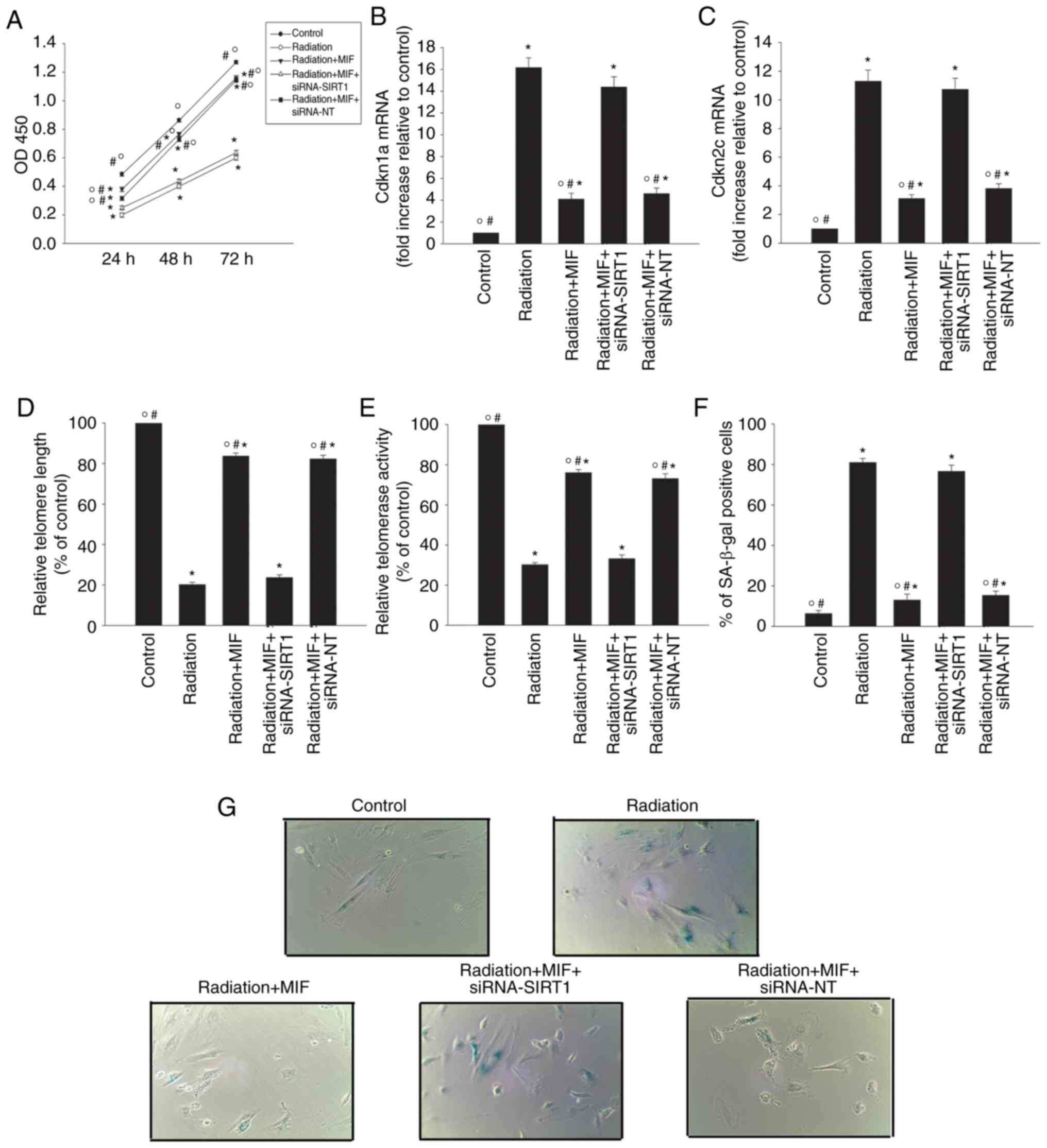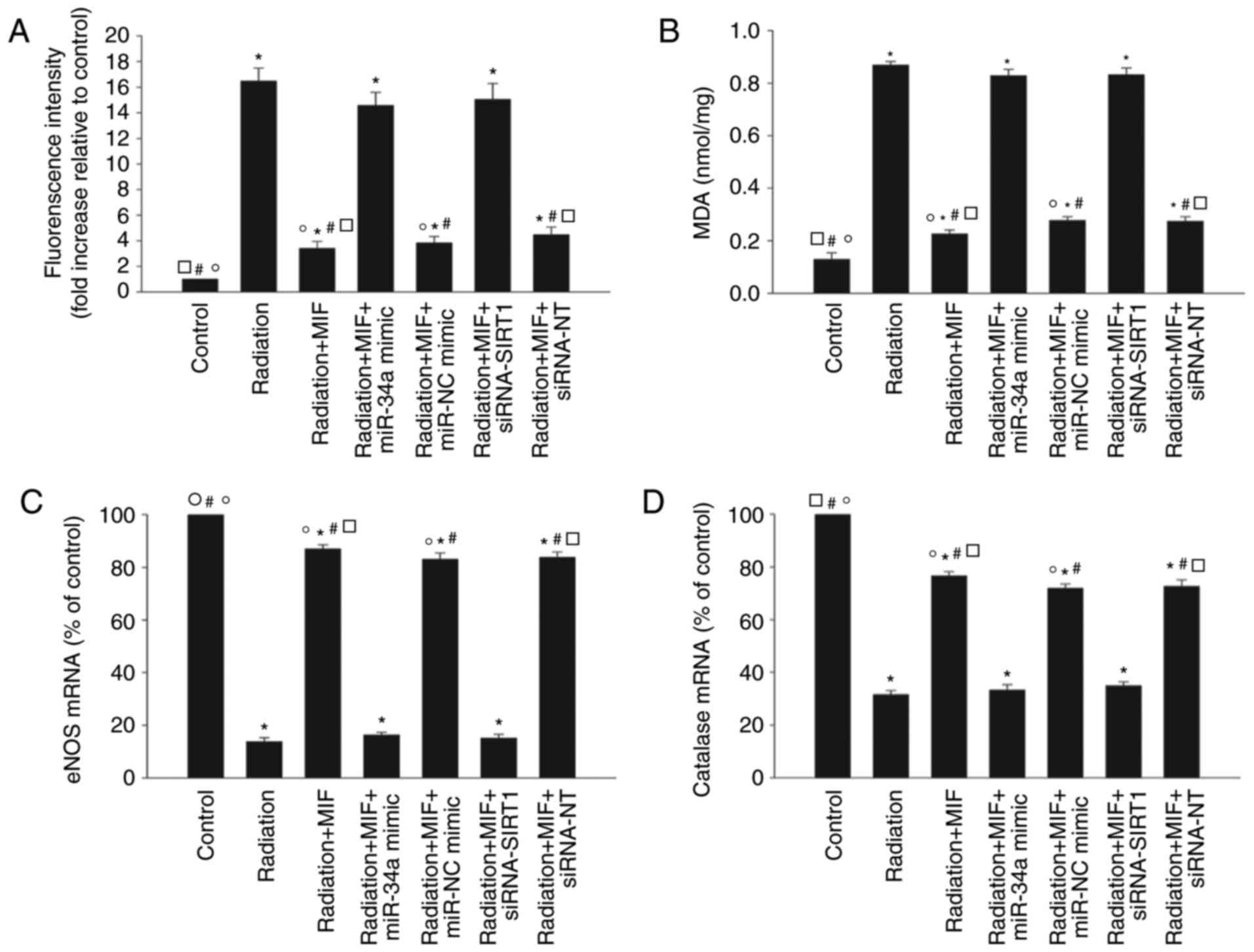|
1
|
Taylor C, Correa C, Duane FK, Aznar MC,
Anderson SJ, Bergh J, Dodwell D, Ewertz M, Gray R, Jagsi R, et al:
Estimating the risks of breast cancer radiotherapy: Evidence from
modern radiation doses to the lungs and heart and from previous
randomized trials. J Clin Oncol. 35:1641–1649. 2017. View Article : Google Scholar : PubMed/NCBI
|
|
2
|
EBCTCG (Early Breast Cancer Trialists'
Collaborative Group); McGale P, Taylor C, Correa C, Cutter D, Duane
F, Ewertz M, Gray R, Mannu G, Peto R, et al: Effect of radiotherapy
after mastectomy and axillary surgery on 10-year recurrence and
20-year breast cancer mortality: Meta-analysis of individual
patient data for 8135 women in 22 randomised trials. Lancet.
383:2127–2135. 2014. View Article : Google Scholar : PubMed/NCBI
|
|
3
|
Saiki H, Moulay G, Guenzel AJ, Liu W,
Decklever TD, Classic KL, Pham L, Chen HH, Burnett JC, Russell SJ
and Redfield MM: Experimental cardiac radiation exposure induces
ventricular diastolic dysfunction with preserved ejection fraction.
Am J Physiol Heart Circ Physiol. 313:H392–H407. 2017. View Article : Google Scholar : PubMed/NCBI
|
|
4
|
Coleman MA, Sasi PS, Onufrak J, Natarajan
M, Manickam K, Schwab J, Muralidharan S, Peterson LE, Alekseyev YO,
Yan X and Goukassian DA: Low dose radiation affects cardiac
physiology: Gene networks and molecular signaling in
cardiomyocytes. Am J Physiol Heart Circ Physiol. 309:H1947–H1963.
2015. View Article : Google Scholar : PubMed/NCBI
|
|
5
|
Du WW, Yang W, Chen Y, Wu ZK, Foster FS,
Yang Z, Li X and Yang BB: Foxo3 circular RNA promotes cardiac
senescence by modulating multiple factors associated with stress
and senescence responses. Eur Heart J. 38:1402–1412. 2017.
|
|
6
|
Smith-Vikos T and Slack FJ: MicroRNAs and
their roles in aging. J Cell Sci. 125:7–17. 2012. View Article : Google Scholar : PubMed/NCBI
|
|
7
|
Yang Y, Cheng HW, Qiu Y, Dupee D, Noonan
M, Lin YD, Fisch S, Unno K, Sereti KI and Liao R: MicroRNA-34a
plays a key role in cardiac repair and regeneration following
myocardial infarction. Circ Res. 7:450–459. 2015. View Article : Google Scholar
|
|
8
|
Fomisonnurse I, Saw EEL, Gandhi S,
Munasinghe PE, Van Hout I, Williams MJA, Galvin I, Bunton R, Davis
P, Cameron V and Katare R: Diabetes induces the activation of
pro-ageing miR-34a in the heart, but has differential effects on
cardiomyocytes and cardiac progenitor cells. Cell Death Differ.
25:1336–1349. 2018. View Article : Google Scholar
|
|
9
|
Hong EH, Lee SJ, Kim JS, Lee KH, Um HD,
Kim JH, Kim SJ, Kim JI and Hwang SG: Ionizing radiation induces
cellular senescence of articular chondrocytes via negative
regulation of SIRT1 by p38 kinase. J Biol Chem. 285:1283–1295.
2010. View Article : Google Scholar :
|
|
10
|
Miller EJ, Li J, Leng L, McDonald C,
Atsumi T, Bucala R and Young LH: Macrophage migration inhibitory
factor stimulates AMP-activated protein kinase in the ischaemic
heart. Nature. 451:578–582. 2008. View Article : Google Scholar : PubMed/NCBI
|
|
11
|
Ma H, Wang J, Thomas DP, Tong C, Leng L,
Wang W, Merk M, Zierow S, Bernhagen J, Ren J, et al: Impaired
macrophage migration inhibitory factor-AMP-activated protein kinase
activation and ischemic recovery in the senescent heart.
Circulation. 122:282–292. 2010. View Article : Google Scholar : PubMed/NCBI
|
|
12
|
Xu X, Hua Y, Nair S, Bucala R and Ren J:
Macrophage migration inhibitory factor deletion exacerbates
pressure overload-induced cardiac hypertrophy through mitigating
autophagy. Hypertension. 63:490–499. 2014. View Article : Google Scholar :
|
|
13
|
Xu X, Pacheco BD, Leng L, Bucala R and Ren
J: Macrophage migration inhibitory factor plays a permissive role
in the maintenance of cardiac contractile function under starvation
through regulation of autophagy. Cardiovasc Res. 99:412–421. 2013.
View Article : Google Scholar : PubMed/NCBI
|
|
14
|
Azimzadeh O, Azizova T, Merlpham J,
Subramanian V, Bakshi MV, Moseeva M, Zubkova O, Hauck SM, Anastasov
N, Atkinson MJ and Tapio S: A dose-dependent perturbation in
cardiac energy metabolism is linked to radiation-induced ischemic
heart disease in Mayak nuclear workers. Oncotarget. 8:9067–9078.
2017. View Article : Google Scholar :
|
|
15
|
Haigis MC and Sinclair DA: Mammalian
sirtuins: Biological insights and disease relevance. Annu Rev
Pathol. 5:253–295. 2009. View Article : Google Scholar
|
|
16
|
Morris BJ: Seven sirtuins for seven deadly
diseases of aging. Free Radic Biol Med. 56:133–171. 2013.
View Article : Google Scholar
|
|
17
|
De Angelis A, Piegari E, Cappetta D, Russo
R, Esposito G, Ciuffreda LP, Ferraiolo FA, Frati C, Fagnoni F,
Berrino L, et al: SIRT1 activation rescues doxorubicin-induced loss
of functional competence of human cardiac progenitor cells. Int J
Cardiol. 189:30–44. 2015. View Article : Google Scholar : PubMed/NCBI
|
|
18
|
Zhang C, Wang J, Ma X, Wang W, Zhao B,
Chen Y, Chen C and Bihl JC: ACE2-EPC-EXs protect ageing ECs against
hypoxia/reoxygenation-induced injury through the miR-18a/Nox2/ROS
pathway. J Cell Mol Med. 22:1873–1882. 2018. View Article : Google Scholar : PubMed/NCBI
|
|
19
|
Iglesias-Bartolome R, Patel V, Cotrim A,
Leelahavanichkul K, Molinolo AA, Mitchell JB and Gutkind JS: mTOR
inhibition prevents epithelial stem cell senescence and protects
from radiation-induced mucositis. Cell Stem Cell. 11:401–414. 2012.
View Article : Google Scholar : PubMed/NCBI
|
|
20
|
Guo Y, Li P, Gao L, Zhang J, Yang Z,
Bledsoe G, Chang E, Chao L and Chao J: Kallistatin reduces vascular
senescence and aging by regulating microRNA-34a-SIRT1 pathway.
Aging Cell. 16:837–846. 2017. View Article : Google Scholar : PubMed/NCBI
|
|
21
|
Lewinska A, Adamczykgrochala J,
Kwasniewicz E, Deregowska A, Semik E, Zabek T and Wnuk M: Reduced
levels of methyltransferase DNMT2 sensitize human fibroblasts to
oxidative stress and DNA damage that is accompanied by changes in
proliferation-related miRNA expression. Redox Biol. 14:20–34. 2018.
View Article : Google Scholar
|
|
22
|
Gu A, Jie Y, Sun L, Zhao S, E M and You Q:
RhNRG-1β protects the myocardium against irradiation-induced damage
via the ErbB2-ERK-SIRT1 signaling pathway. Plos One.
10:e01373372015. View Article : Google Scholar
|
|
23
|
Livak KJ and Schmittgen TD: Analysis of
relative gene expression data using real-time quantitative PCR and
the 2(−Delta Delta C(T)) method. Methods. 25:402–408. 2001.
View Article : Google Scholar
|
|
24
|
Crepin T, Carron C, Roubiou C, Gaugler B,
Gaiffe E, Simula-Faivre D, Ferrand C, Tiberghien P, Chalopin JM,
Moulin B, et al: ATG-induced accelerated immune senescence:
Clinical implications in renal transplant recipients. Am J
Transplant. 15:1028–1038. 2015. View Article : Google Scholar : PubMed/NCBI
|
|
25
|
Filippi-Chiela EC, Bueno e Silva MM, Thomé
MP and Lenz G: Single-cell analysis challenges the connection
between autophagy and senescence induced by DNA damage. Autophagy.
11:1099–1113. 2015. View Article : Google Scholar : PubMed/NCBI
|
|
26
|
Ewer MS and Ewer SM: Cardiotoxicity of
anticancer treatments. Nat Rev Cardiol. 12:547–558. 2015.
View Article : Google Scholar : PubMed/NCBI
|
|
27
|
Cohen S, Liu A, Gurvitz M, Guo L, Therrien
J, Laprise C, Kaufman JS, Abrahamowicz M and Marelli AJ: Exposure
to low-dose ionizing radiation from cardiac procedures and
malignancy risk in adults with congenital heart disease.
Circulation. 137:1334–1345. 2018. View Article : Google Scholar
|
|
28
|
Dess RT, Sun Y, Matuszak MM, Sun G, Soni
PD, Bazzi L, Murthy VL, Hearn JWD, Kong FM, Kalemkerian GP, et al:
Cardiac events after radiation therapy: Combined analysis of
prospective multicenter trials for locally advanced non-small-cell
lung cancer. J Clin Oncol. 35:1395–1402. 2017. View Article : Google Scholar : PubMed/NCBI
|
|
29
|
Kaushik G, Spenlehauer A, Sessions AO,
Trujillo AS, Fuhrmann A, Fu Z, Venkatraman V, Pohl D, Tuler J, Wang
M, et al: Vinculin network-mediated cytoskeletal remodeling
regulates contractile function in the aging heart. Sci Transl Med.
7:292ra2992015. View Article : Google Scholar
|
|
30
|
Blice-Baum AC, Zambon AC, Kaushik G,
Viswanathan MC, Engler AJ, Bodmer R and Cammarato A: Modest
overexpression of FOXO maintains cardiac proteostasis and
ameliorates age-associated functional decline. Aging Cell.
16:93–103. 2017. View Article : Google Scholar : PubMed/NCBI
|
|
31
|
Dorn GW II: miR-34a and the cardiomyopathy
of senescence: SALT PNUTS, SALT PNUTS! Cell Metab. 17:629–630.
2013. View Article : Google Scholar : PubMed/NCBI
|
|
32
|
He X, Yang A, Mcdonald DG, Riemer EC,
Vanek KN, Schulte BA and Wang GY: MiR-34a modulates ionizing
radiation-induced senescence in lung cancer cells. Oncotarget.
8:69797–69807. 2017.PubMed/NCBI
|
|
33
|
Merk M, Mitchell RA, Endres S and Bucala
R: D-dopachrome tautomerase 1 (D-DT or MIF-2): Doubling the MIF
cytokine family. Cytokine. 59:10–17. 2012. View Article : Google Scholar : PubMed/NCBI
|
|
34
|
Yoshihisa Y, Rehman MU, Kondo T and
Shimizu T: Role of macrophage migration inhibitory factor in
heat-induced apoptosis in keratinocytes. FASEB J. 30:3870–3877.
2016. View Article : Google Scholar : PubMed/NCBI
|
|
35
|
von Muhlinen N, Horikawa I, Alam F,
Isogaya K, Lissa D, Vojtesek B, Lane DP and Harris CC: p53 isoforms
regulate premature aging in human cells. Oncogene. 37:2379–2393.
2018. View Article : Google Scholar : PubMed/NCBI
|
|
36
|
Zhao T, Li J and Chen AF: MicroRNA-34a
induces endothelial progenitor cell senescence and impedes its
angiogenesis via suppressing silent information regulator 1. Am J
Physiol Endocrinol Metab. 299:E110–E116. 2010. View Article : Google Scholar : PubMed/NCBI
|
|
37
|
Venkatachalam G, Surana U and Clément MV:
Replication stress-induced endogenous DNA damage drives cellular
senescence induced by a sub-lethal oxidative stress. Nucleic Acids
Res. 45:10564–10582. 2017. View Article : Google Scholar : PubMed/NCBI
|
|
38
|
Mallette FA, Gaumont-Leclerc MF and
Ferbeyre G: The DNA damage signaling pathway is a critical mediator
of oncogene-induced senescence. Genes Dev. 21:43–48. 2007.
View Article : Google Scholar : PubMed/NCBI
|
|
39
|
Purvis JE, Karhohs KW, Mock C, Batchelor
E, Loewer A and Lahav G: p53 dynamics control cell fate. Science.
336:1440–1444. 2012. View Article : Google Scholar : PubMed/NCBI
|
|
40
|
Lin KC, Yip HK, Shao PL, Wu SC, Chen KH,
Chen YT, Yang CC, Sun CK, Kao GS, Chen SY, et al: Combination of
adipose-derived mesenchymal stem cells (ADMSC) and ADMSC-derived
exosomes for protecting kidney from acute ischemia-reperfusion
injury. Int J Cardiol. 216:173–185. 2016. View Article : Google Scholar : PubMed/NCBI
|



